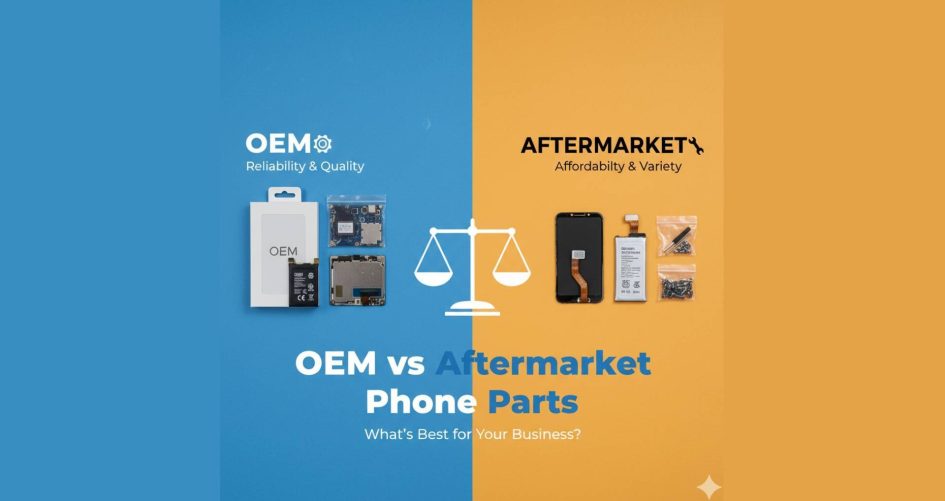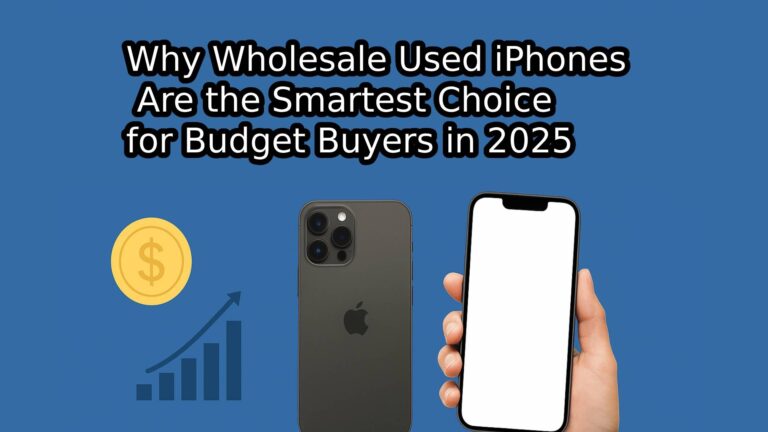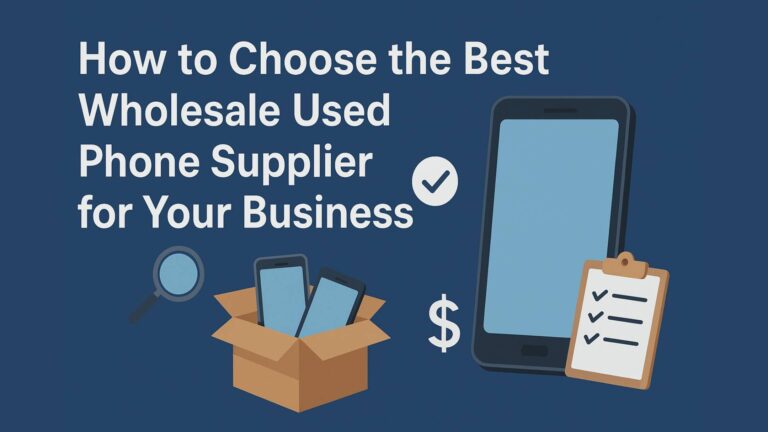In the fast-moving world of mobile repair B2B, choosing the right parts for your inventory or service workflow is a make-or-break decision. Whether you’re scaling a refurbishing operation or stocking a repair center, the debate of OEM phone parts versus third-party alternatives is critical. This guide explores everything you need to know about aftermarket vs original components and how the right choice shapes success in mobile repair B2B operations. Know more.
Why This Debate Matters in Mobile Repair B2B
The quality of parts you use directly affects:
- Device performance and longevity
- Warranty claims and return rates
- Customer satisfaction and referrals
- Your brand’s reputation in the mobile repair B2B space
Choosing between OEM phone parts and alternatives isn’t just about cost. It’s about balancing quality, availability, and margin. That’s why the aftermarket vs original debate requires a strategic approach.
What Are OEM Phone Parts?
OEM phone parts (Original Equipment Manufacturer) are components made by or for the brand (Apple, Samsung, etc.). These are the same parts used in new devices:
- Identical in fit, finish, and function
- Produced under strict quality control
- Often come with compatibility guarantees
In mobile repair B2B, sourcing OEM phone parts ensures seamless performance and minimal compatibility risks—making them ideal for high-end refurb or warranty-grade repairs.
What Are Aftermarket Parts?
Aftermarket parts are made by third-party manufacturers not affiliated with the original brand. These parts vary widely in quality:
- Grade A+ or Premium: Close to OEM in specs and fit
- Standard aftermarket: Cost-effective but may differ in quality
- Low-grade/fake: Poorly made and risky for resale
When discussing aftermarket vs original, it’s vital to differentiate between high-end aftermarket (trusted suppliers, tight tolerances) and cheap knockoffs.
Pros of OEM Phone Parts in Mobile Repair B2B
- Guaranteed Compatibility
Zero risk of errors, fit issues, or software conflicts. This reduces troubleshooting time in bulk operations. - Better Customer Trust
When customers see “OEM phone parts used,” they feel more confident in quality. - Higher Resale Value
Refurbished phones with OEM phone parts often fetch higher resale prices in mobile repair B2B and direct-to-consumer markets. - Long-Term Reliability
OEM parts are tested for longevity and real-world stress, reducing return rates and warranty claims.
Cons of OEM Phone Parts
- Higher Cost
OEM components are usually more expensive than aftermarket—especially screens and batteries. - Availability Constraints
OEM phone parts may be hard to source in volume for certain models. - Region Locks or Serial Matching
Apple, for example, has introduced pairing issues that complicate OEM phone parts use unless sourced from authorized channels.
Pros of Aftermarket Parts
- Lower Cost Per Unit
Major upside for budget-conscious mobile repair B2B providers. - Wide Availability
Easier to stock in bulk, especially for older or low-demand models. - More Profit Margin
If quality is acceptable, aftermarket vs original parts can offer better ROI for wholesalers and service centers.
Cons of Aftermarket Parts
- Inconsistent Quality
Without tight quality control, aftermarket components vary even within the same batch. - Possible Fit/Finish Issues
Slight size or connector mismatches can cause installation problems. - Software Compatibility
Some phone OS updates may reject non-original components (especially in displays and Face ID modules).
Key Comparison: Aftermarket vs Original Parts
| Feature | OEM Phone Parts | High-Grade Aftermarket |
| Quality Control | Factory-grade | Varies by supplier |
| Cost | High | Lower |
| Availability | Limited (region/model-specific) | Broad |
| Software Compatibility | 100% compatible | May trigger alerts |
| Used in Warranty Repairs | Yes | Rarely |
| Used in Budget Repairs | Not ideal | Often preferred |
This table can help mobile repair B2B decision-makers pick the right part type for each business model.
How to Choose the Right Supplier
Regardless of which side you choose in the aftermarket vs original debate, supplier reliability is everything. Look for:
- Verified reviews or B2B reputation
- Clear quality grading (e.g., OEM, A++, A, B)
- Consistent delivery times
- Quality guarantees or return policies
A trusted supplier in the mobile repair B2B market helps you scale confidently—whether you’re stocking OEM phone parts or high-grade aftermarket units.
Certifications and Legal Considerations
- OEM phone parts sourced without authorization may void warranties or violate trademark laws.
- Aftermarket components must meet basic safety and environmental standards (RoHS, CE).
- In some regions, selling refurbished phones with non-original parts must be disclosed for consumer protection.
Being transparent protects your mobile repair B2B brand and reduces legal risks.
How to Market Your Choice
If you use OEM phone parts:
- Highlight “original parts used” in listings
- Emphasize longevity, compatibility, and performance
- Use OEM logos and documentation (if licensed to do so)
If you use aftermarket parts:
- Stress the value-for-money angle
- Highlight warranty coverage and testing processes
- Be honest: “high-grade replacement” or “OEM-equivalent”
In either case, clarity wins in the aftermarket vs original communication strategy.
Real-World Scenarios for Each Option
Scenario 1: High-End Refurbishing for Retail
Best option: OEM phone parts
Reason: Justifies a higher price tag and premium product listing. Fewer returns.
Scenario 2: Budget Repair Service in Bulk
Best option: Aftermarket (Grade A+ only)
Reason: Reduces cost per unit, ideal for warranty-less sales.
Scenario 3: Enterprise Fleet Repairs
Best option: Mix of OEM phone parts and high-end aftermarket
Reason: Critical components like batteries should be OEM; cosmetic ones can be aftermarket.
This strategic mix approach is gaining popularity in mobile repair B2B models.
Final Thoughts
In the mobile repair B2B world, choosing between OEM phone parts and aftermarket components is a business decision—not a one-size-fits-all choice. By understanding the real differences in the aftermarket vs original debate, setting clear standards, and building supplier partnerships, you can align quality with margin and scale your operations with confidence.
Need help sourcing consistent parts, building test workflows, or training your team on spotting counterfeit components? Let’s talk—we support B2B clients with deep industry experience and top-tier inventory solutions. Know more.





